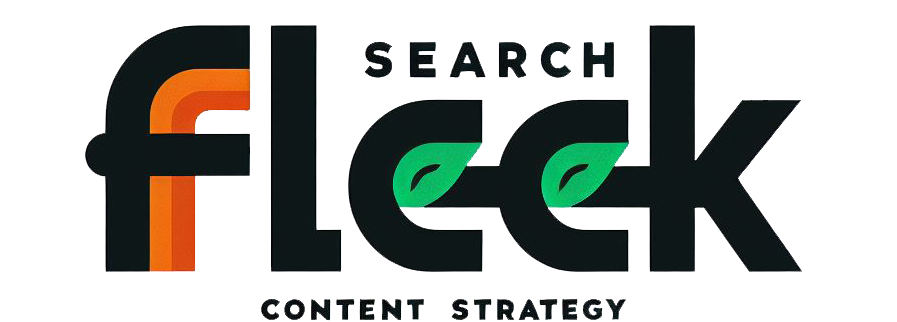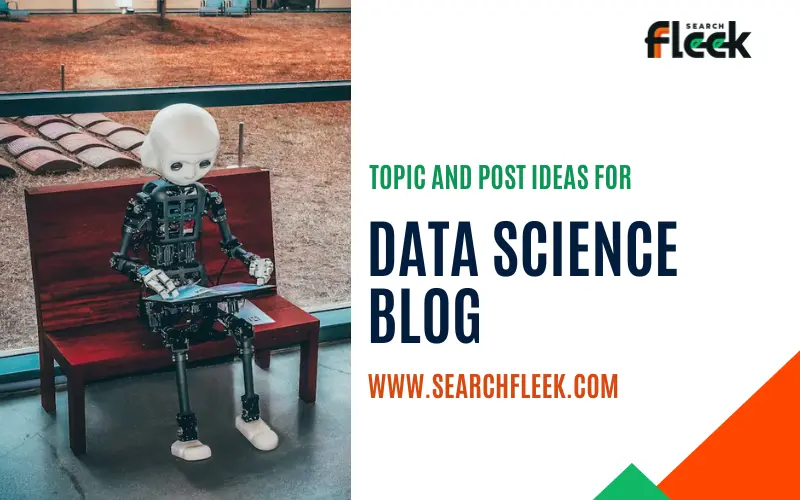Data science, the art of extracting knowledge and insights from data, is a rapidly evolving field with vast applications. Whether you’re a seasoned data scientist or just starting your journey, captivating blog content can be your key to learning, sharing, and inspiring others. Here, Search Fleek ignites your data science spark with 65 captivating blog post ideas to fuel your content creation:
Unveiling the World of Data Science: 65 Blog Topic Ideas to Spark Engagement
Exploring the Fundamentals of Data Science:
- A Beginner’s Guide to Data Science: Essential Concepts, Skills, and Tools
- The Data Science Workflow: From Data Collection to Analysis and Communication
- Understanding Data Types: Categorical, Numerical, and Textual Data Explained
- Data Cleaning and Preprocessing: Wrangling Your Data for Quality Analysis
- Exploratory Data Analysis (EDA): Unveiling Patterns and Trends in Your Data
- Essential Data Visualization Techniques: Charts, Graphs, and Effective Visual Storytelling
- Introduction to Statistics for Data Science: Understanding Descriptive and Inferential Statistics
- Introduction to Python for Data Science: Mastering the Powerhouse Programming Language
- Choosing the Right Data Science Tools for the Job: Python Libraries and Frameworks
- Data Science Ethics and Responsible AI: Balancing Insights with Fairness and Privacy
Delving into Data Science Techniques:
- Supervised Learning Explained: Predicting Values Based on Existing Data
- Regression Analysis: Forecasting Continuous Outcomes with Linear Regression
- Classification Algorithms: Predicting Categorical Outcomes Like Customer Churn
- Unsupervised Learning Techniques: Discovering Hidden Patterns and Structures
- Clustering: Grouping Data Points Based on Similarities and Differences
- Dimensionality Reduction: Simplifying Complex Data for Effective Analysis
- Machine Learning Model Evaluation: Measuring Performance and Avoiding Biases
- K-Nearest Neighbors (KNN): A Simple Yet Powerful Classification Algorithm
- Decision Trees: Making Predictions Through a Series of Yes/No Questions
- Random Forests: Combining Multiple Decision Trees for Improved Accuracy
Applying Data Science in Different Industries:
- Data Science in Healthcare: Revolutionizing Diagnosis, Treatment, and Drug Discovery
- Data Science in Finance: Predicting Market Trends and Managing Risk
- Data Science in Marketing: Tailoring Campaigns and Personalizing Customer Experiences
- Data Science in Retail: Optimizing Inventory Management and Understanding Customer Behavior
- Data Science in Social Media: Analyzing Trends, Sentiment, and Social Media Engagement
- Data Science in E-commerce: Predicting Customer Purchases and Personalizing Recommendations
- Data Science in Manufacturing: Streamlining Production Processes and Improving Efficiency
- Data Science for Climate Change: Analyzing Data and Predicting Environmental Trends
- Data Science for Sports Analytics: Optimizing Performance and Predicting Game Outcomes
- Data Science in Natural Language Processing: Understanding Human Language with Machines
Building Your Data Science Career:
- Essential Skills for Data Scientists: From Technical Expertise to Communication
- Building a Strong Data Science Portfolio: Showcasing Your Skills and Experience
- Data Science Interview Tips: Landing Your Dream Job in a Competitive Field
- Data Science Career Paths: Exploring Different Specializations and Opportunities
- Continuing Education for Data Scientists: Keeping Up with the Latest Trends
- Freelancing and Consulting in Data Science: Building a Successful Side Hustle
- The Importance of Networking in Data Science: Connecting with the Community
- Overcoming Challenges in the Data Science Job Market: Standing Out from the Crowd
- Data Science and Remote Work: Opportunities and Challenges of Working from Anywhere
- Data Science Mentorship: Sharing Knowledge and Empowering Others
Engaging Your Data Science Audience:
- Data Science Case Studies: Showcasing Real-World Applications Across Industries
- Data Science Book Reviews: Sharing Insights and Recommendations
- Debunking Data Science Myths: Separating Fact from Fiction in the Field
- Data Science for Beginners: Easy-to-Understand Guides and Tutorials
- Data Science Humor and Memes: Adding a Lighthearted Touch to Complex Topics
- Interactive Data Science Projects: Engaging Your Audience with Exploratory Tools
- 47. Data Science Podcasts and Video Resources: Learning from Industry Experts
- Data Science Q&A Sessions: Addressing Audience Questions and Fostering Interaction
- Data Science Challenges and Competitions: Testing Your Skills and Learning from Others
- Collaborating with Other Data Scientists: Building Partnerships for Impactful Projects
- Data Science Glossary and Terminology: Defining Key Terms and Concepts
- Data Science Code Examples and Tutorials: Putting Theory into Practice
- Data Science for Social Good: Addressing Global Challenges Through Data Analysis
- Data Science and Open Source: Utilizing Free and Accessible Tools and Libraries
- Data Science Humor and Memes: Adding a Lighthearted Touch to Complex Topics
- Data Science Glossary and Terminology: Defining Key Terms and Concepts
- Data Science Code Examples and Tutorials: Putting Theory into Practice
- Data Science for Social Good: Addressing Global Challenges Through Data Analysis
- Data Science and Open Source: Utilizing Free and Accessible Tools and Libraries
- Data Science Humor and Memes: Adding a Lighthearted Touch to Complex Topics
Demystifying Big Data:
- Challenges of Big Data Management: Security, Scalability, and Quality
- Data Visualization for Big Data: Communicating Insights Effectively
- The Role of Cloud Computing in Big Data: Scalable Infrastructure
- The Future of Big Data and Analytics: Real-Time and IoT Integration
- Data Science Jobs in Big Data: Career Opportunities in Large Datasets
Data Science and Artificial Intelligence:
- Explainable AI (XAI): Making AI Decisions Transparent
Demystifying Big Data: Unlocking the Power of Large Datasets
- What is Big Data? Dive into the world of massive datasets and explore their characteristics.
- Big Data Processing Techniques: Explain methods like distributed computing and data warehousing for handling vast amounts of information.
- Big Data Analytics Tools: Discuss tools like Hadoop, Spark, and Kafka used for analyzing large datasets efficiently.
- Real-World Applications of Big Data: Showcase how industries leverage Big Data for tasks like customer behavior prediction and fraud detection.
- The Future of Big Data: Explore emerging trends like Big Data in the cloud and the increasing importance of real-time analytics.
Content as Kingmaker: Why SEO & Topic Research Fuel Business Blogging
In today’s digital landscape, a well-maintained business blog isn’t a luxury, it’s a strategic weapon. But churning out generic content won’t cut it. To truly thrive online, you need a data-driven approach that prioritizes both SEO and strategic topic research.
SEO acts like a compass, guiding search engines towards your valuable content. This empowers potential customers actively searching for solutions to discover your blog. But SEO is more than just technical optimization. It starts with understanding your audience’s needs.
Here’s where topic research becomes kingmaker. By delving into social media analytics, surveys, and competitor content, you gain invaluable insights into the specific questions and challenges your target audience faces. This empowers you to craft compelling blog topics that resonate with their pain points and aspirations.
Imagine this: You wouldn’t open a restaurant without understanding your customers’ tastes. Similarly, successful business blogging requires knowing your audience’s online “appetite” for information. Topic research helps you identify the specific “dishes” – blog topics – that will truly satisfy their hunger for knowledge and solutions.
By strategically weaving relevant keywords, identified through SEO research, into these well-researched topics, you create content that not only informs and engages your audience but also ranks higher in search engine results pages (SERPs). This translates to a powerful trifecta:
- Attract Qualified Leads: Targeted topics act like a magnet, attracting potential customers actively searching for solutions you offer.
- Boost Organic Traffic: SEO best practices ensure your content gets discovered by search engines, driving organic traffic without relying solely on paid advertising.
- Establish Brand Authority: Publishing informative & engaging content positions you as a thought leader within your industry, fostering brand loyalty and increasing conversions.
Remember, content is king, but targeted and well-researched content, informed by SEO best practices, is the kingmaker in the competitive world of online business blogging.
Data Science and Artificial Intelligence: A Symbiotic Relationship
- What is Artificial Intelligence (AI)? Define AI and explain its core concepts like machine learning and deep learning.
- How Do Data Science and AI Work Together? Illustrate how data science provides the foundation for AI algorithms to learn and improve.
- Applications of AI in Different Fields: Showcase how AI is being used in areas like healthcare, finance, and robotics.
- The Ethical Considerations of AI: Discuss the challenges of bias, transparency, and responsible development in AI.
- The Future of Data Science and AI: Explore how these fields will continue to evolve and impact our world.
FAQs: Unveiling the Mysteries of Data Science
A: The demand for data scientists is high and expected to grow significantly. Data scientists enjoy competitive salaries and have the opportunity to work across various industries.
A: While a PhD can be beneficial, many data science opportunities require a Master’s degree or strong experience with relevant skills and tools.
A: Python is a dominant language in data science. Other important languages include R, SQL, and Java. Mastering these languages depends on your specific data science area.
A: Many open-source datasets are available online, covering diverse domains. Explore government data portals, Kaggle, and online repositories for research purposes.
Conclusion: Unlocking the Potential of Data Science with Engaging Content
By leveraging these blog post ideas and creating high-quality content, you can establish yourself as a valuable resource in the data science community. Whether you’re a seasoned expert or an aspiring data scientist, captivating content fosters learning, collaboration, and innovation. Embrace the power of data science, share your knowledge, and ignite curiosity in others. So, delve into the fascinating world of data science and unleash its potential through engaging blog content!
Feeling overwhelmed by the possibilities of Data Science? Don’t be! A well-crafted blog outline acts as your SEO compass. This roadmap helps you stay focused, ensuring your blog post leverages relevant keywords strategically, incorporates a dedicated FAQ section to address reader questions, and concludes with a strong call to action.
Emon Anam, CEO of Search Fleek, isn't your typical digital guru. He brings a unique blend of financial expertise (former banking pro!) and digital marketing mastery to the table. A self-proclaimed "SEO Sherlock Holmes," Emon unlocks content secrets for local businesses and SaaS companies. But beyond the keyboard, he's a devoted family man, music enthusiast, and cricket champion. Let Emon weave your digital success story!
AI Writing Disclaimer
This post was initially researched and outlined by me. The content was then generated by an AI language model using the provided information. The final text has been reviewed and edited by me for accuracy and clarity.




